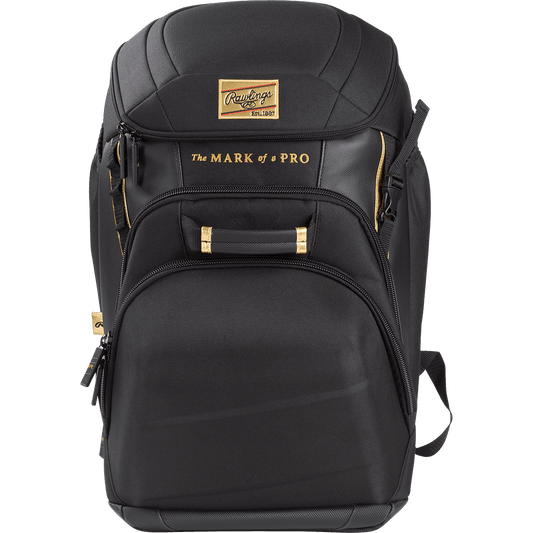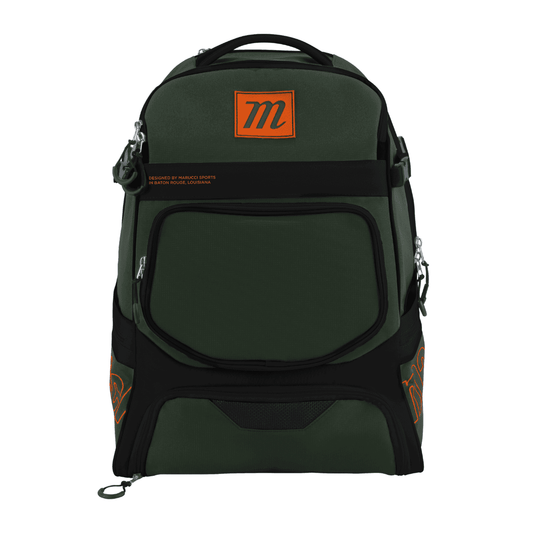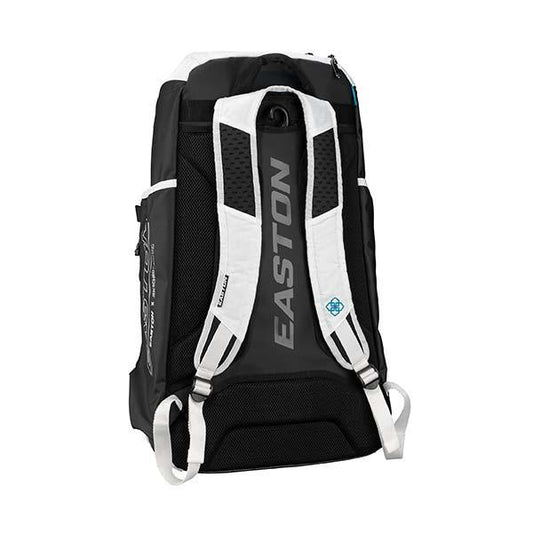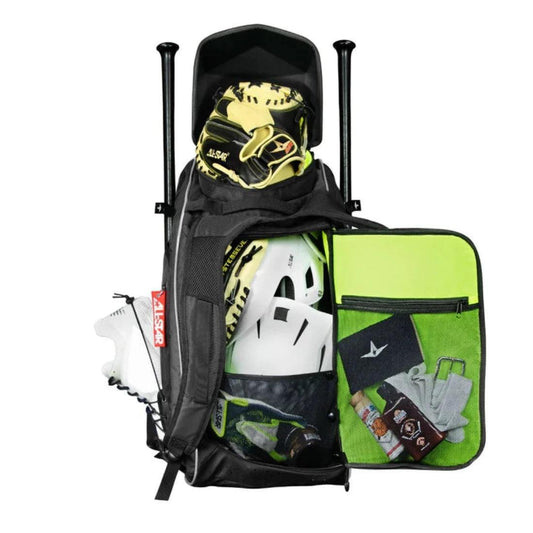Which piece of equipment matters the most to a baseball player? Is it his fielding glove? His batting glove? His baseball turf shoes or his cleats? His sunglasses? Is it the baseball bat? Can such a question be answered, anyway?
It’s highly subjective, that much is for sure. Like most debates that exist in sports, there rarely is one single right answer to such a question. Records and rules are both meant to be broken, and picking out a “single” most important piece of equipment seems like an open-ended question that can be argued ad infinitum.
So let’s key in on a more specific question: What type of material produces the best baseball bat? Can this question be answered with a more definitive statement?
Again, probably not; so what we’re going to do is evaluate the strengths and weaknesses of bats made from wood, alloy, and composites, the three classes of materials from which bats are commonly made. If we can’t tell you with certainty which bat is the best, maybe at the end of it you can decide which bat is best for you.
- Wood baseball bats
For a long time, all baseball bats were made of wood. It is the traditional material for a bat and the professional players still play with wood. Many of them even prefer the performance of wood bats, despite the material’s temperamentality and the fact that wood bats have a “lifespan.”
Traditionally, wooden bats have typically been made from maple, ash, or birch, although today some bats are made from bamboo, hickory, or even composite woods, which are light and strong - but not legal for play everywhere.
Maple is a hard, dense, strong wood that is also very stiff. It’s also particularly heavy, and for this reason, it takes a lot of strength to control a maple bat and use it effectively. With that in mind, maple can produce high-performing wood bats.
Ash is lighter and more flexible than maple, which traits endear it to some players. Because of its flexibility and superior sensitivity, it provides a lot of valuable feedback to players through the bat handle. Ash might not produce bats that hit as hard as maple, but it’s still a choice material.
Finally, we have birch, which is harder and heavier than ash, but not as heavy as maple. This gives birch bats a good combination of the hard-hitting character of maple and the flexibility and responsiveness of ash.
- Wood bat strengths
Wood bat strengths have a number of benefits, which are why so many players train with them. For one thing, wood bats force you to pay very close attention to your swing speed and your control over the bat. When you make contact with the ball, a wooden bat will tell you more about the nature of the swing unlike any other material.

Yes, it’s true that composite and alloy bats can be made very sensitive, but wooden bats bring sensitivity to a new level. Wood bats enable players to feel whether they’ve made contact at the sweet spot, where the sweet spot is, and how large it is. They are also unforgiving of mishits, which the player can read in the form of painful, stinging feedback - or when the bat shatters.
That’s another thing you need to know. Because wood will break when it is used harshly, it requires you to get better at controlled bat speed and control. Wood bats are not cheap - and breaking one is more than just disappointing.
Plus, the pros use wood, so there’s another benefit. If you have serious professional aspirations, you might as well start training now.
- Wood bat drawbacks
The drawbacks of wooden bats should actually be more or less evident from what we’ve presented as the benefits, but there are a few more to consider. First, let’s get the obvious one out of the way. Wood is unforgiving, and wood bats will eventually break if they have been abused or misused.
For some players, another drawback of wooden bats is that they don’t offer the same batted performance as high-tech composite and alloy bats. So, for some, this is a huge negative attribute of wood. It’s categorically inferior, which is actually the reason that pros use it. It’s harder to be good with a wood bat and it prevents danger from excessively high batted ball speeds.
- Who should use a wood bat?
Obviously, anyone whose league requires him to use a wood bat should use one. In addition to that, players who want to seriously refine their abilities should take practicing with a wooden bat seriously. There’s plenty of information out there that reinforces this opinion. We’re not the only ones saying it, but let’s make it easy for you to remember - get good, play with wood.
- Alloy baseball bats
In addition to wood bats, there are baseball bats that are made from alloy. Many alloy bats are commonly made from alloys of aluminum or other metals. They are tough, dependable and affordable, and some modern alloy bats offer serious performance. There is also the consideration that some leagues might require or forbid them. With this basic information in mind, let’s take a look at some of the benefits, or strengths, if you will, of aluminum and other alloy bats.
- Alloy bat strengths
Since alloy bats are made from metal, one of their most important and glaring strengths is that they are virtually indestructible. There is very little, if anything, that you can do to a metal bat to cause it to give up, or to cause significant damage to it. At least in the course of play and practice, they are basically indestructible. The truth is, even if you do manage to impress a dent or a ding into an alloy bat, you can still play or at least practice with it.
Another thing that makes alloy bats desirable is that they are cheaper to produce than most wood and composite bats. This makes them affordable entry-level bats that players can learn and practice on without the frustrating temperamentality of wood bats.
Some will tell you that composite bats need to be broken in, which we’ll address further on in our section on composite bats. Whatever the case, alloy bats do not require a break-in period. You can pick up a brand new alloy bat and you’ll get basically the performance advertised by it right out of the gate.
While alloy bats don’t always have large or forgiving sweet spots, since they can be manufactured with varying technology, the size and nature of the sweet spot can be manipulated during the course of production. This produces bats with a wide range of attributes. Additionally, alloy bats can be produced to provide better performance and higher batted ball speed than wood because they can be made with higher compressibility.
- Alloy bat weaknesses
Despite the fact that alloy bats can be made to provide a higher level of performance than wood bats, are more affordable, and require no break-in, it’s not all good news with them.
For one thing, it’s hard to make alloy bats with larger barrels, because they would quickly get too heavy to be used practically. This means that they usually have smaller sweet spots than equivalent composite or carbon fiber bats, although this is not always the case.
Additionally, alloy bats, specifically alloy bats with one-piece construction, typically produce a lot more negative feedback than composite bats with vibration dampening technology. This will vary according to the bat, and wood is usually worse, but it is generally observable.
If you consider it a drawback, it’s a little tougher to build advanced features into an alloy bat than it is to build them into the design of a composite bat, but this is not true across the board. There are some really useful alloy bats that make the most of some amazing technology; there just might be more composite bats that do so.
- Who should use an alloy bat?
As usual, anyone whose league requirements force them to use an alloy bat should do so. It’s also a good idea for some beginners to practice with alloy bats because of their effectively indestructible nature. Since they can’t easily be broken or damaged, they’re good for young learners, especially for practice.

Also, players who need performance right away and are not interested in investing the time necessary to break in a composite bat should use alloy bats. By the same token, since alloy bats can provide higher compressibility, they can provide higher batted ball speeds. This makes them preferable (potentially, at least) for inexperienced players who want to get the best performance they can from a bat.
- Composite baseball bats
Finally, we have composite bats, which are made out of composite materials like carbon fiber. We’re specifically going to leave composite wood bats off of this list because they are rare and not considered composite by the standard definition of what a composite bat is.
These are also the newest type of bat available and have only been around for 40 years or so. Originally, they were designed as softball bats but have since been made into baseball bats.
- Composite bat strengths
One of the most noteworthy things about most composite bats is that they generally produce the highest batted ball speeds of all. Due to the nature of their construction, their performance can be significantly impacted during manufacturing, with very high compressibility for excellent trampoline effect. In fact, the first composite bats resulted in performance that exceeded the acceptable BESR (Bat Exit Speed Ratio) tests. This resulted in the development of a new test, the Batted-Ball Coefficient of Restitution test, better known as the BBCOR batted ball standard. In other words, composite bats are capable of such high-performance and batted ball speeds that they resulted in the development of a new bat standard. They have the potential to be that good.
Because they are manufactured and the weight distribution and composition of the bat can be easily manipulated, composite bats can exhibit wide variability in weight, weight drop, responsiveness, the size of the sweet spot, the durability of the barrel, the width of the barrel and much more. They can be made with quite a range of technologically advanced features.
Also, because of the nature by which the fibers can be arranged and drawn, composite bats can produce a very pronounced trampoline effect, but that has already been well attested.
- Composite bat weaknesses
All of this so far has made composite bats sound pretty attractive, so what could the drawbacks possibly be? Well, for one thing, composite bats have fibers that need to be broken in, which will require you to practice with the bat a little bit before you can expect it to reach peak performance.
These bats don’t just need to be broken in. Some will also claim that they have a given lifespan, which means that after a certain amount of time, they won’t be as effective as they once were. They are also prone to cracking in very cold weather.
Composite bats are also comparatively more expensive than most wood and aluminum bats. They offer excellent performance and generally good durability, but it comes at a price - a high one.
- Who should use a composite bat?
Anyone whose league requires composite bats should use one, as should any younger player who would like to develop confidence over the plate without becoming frustrated by the comparatively more testy performance of wood bats. For that reason, many youth bats are composite models.
Call Us to Learn More
Something else all players need to keep in mind is that the governing body of the league or over the tournaments in which you participate will regulate what bats can and cannot be used in play. This is the first thing you need to take into account when choosing. All else can follow.
However, if you’d like some more personal advice on what to evaluate in a bat, and in which ball bat is right for you, feel free to give us a call. We’ll learn more about your skills, your natural abilities, and your goals, and we’ll help you pick out a bat that will meet your needs.
Call us at 1-800-540-BATS and let us know what you need and we’ll help you get onto what you should be swinging, whether that turns out to be a Louisville Slugger or an Easton bat!





































































































